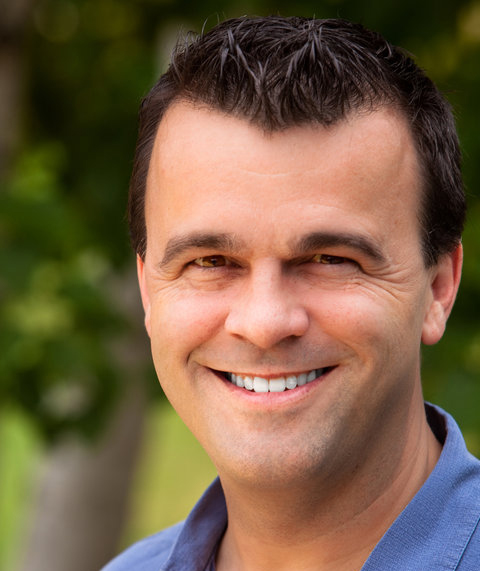Concept to Script to Shoot: Producing Corporate Identity Videos, Part 2
To storyboard or not to storyboard? Should the story drive the interviews or vice versa? At what point in a corporate project do you set video length and budget? These questions and more are discussed in Part 2 of our Producing Corporate Identity Videos series.
To Storyboard or not to Storyboard?
 Whether to storyboard "is a common question I get from clients," Dave Williams of MediaWave Video Productions says. In his experience, the shorter the video, the greater the need for a storyboard. For example, in a 30-second identity video, every second, every shot counts. Basically, "It's more efficient to storyboard if it's 30 seconds. But a 2-, 3-, or 5-minute video can be a little looser."
Whether to storyboard "is a common question I get from clients," Dave Williams of MediaWave Video Productions says. In his experience, the shorter the video, the greater the need for a storyboard. For example, in a 30-second identity video, every second, every shot counts. Basically, "It's more efficient to storyboard if it's 30 seconds. But a 2-, 3-, or 5-minute video can be a little looser."
Hired to produce an identity video that he anticipates will require more thorough planning, Williams and his writer meet with the client to narrow down the concept before presenting a one-page treatment, a sort of blueprint or synopsis, sans shot list or storyboard. MediaWave's treatment for a video they produced for Philadelphia's Jewish Relief Agency, a volunteer organization that provides food to thousands of low-income families, went through three revisions before production started.This piece started with a concept of a music video styled as a "day in the life" of a volunteer along with "day in the life" of a box of donated food, mixed with important statistics and emotion-provoking elements. Upon approval, they create the storyboard and write the script. The script, Williams says, is what dictates budget, pre-production, travel, days of shooting, and so on.
Interview-driven Videos
Like Ryan Koral, Williams typically won't storyboard an interview- or testimonial-based video in great detail, if at all. "Many of our films are strictly testimonial-based," in which he might ask an employee what gets them out of bed in the morning or what their favorite part of the job is, or ask a client to explain why they like the company. "Sometimes the script writes itself," he explains. "We have guidelines, bullet points, we want to hit. We ask leading questions designed to address those bullet points." Answers are mixed with b-roll of footage that supports the company's identity, and voila, he has a draft ready for the client.
Along with the organic way testimonial-driven videos come together, they have the advantage of being authentic, Williams says. Unlike interviewees who use teleprompters (which Williams does often employ, specifically for companies with meticulous legal teams), impromptu testimonials from people answering open-ended questions "come across as warm and from the heart," as they do in his video for Eddie Bruce's "Kids With Heart Talent Show." Working with several nonprofits, the objective "is to tug at the heart strings."
Being Flexible with the Story
 As with Dave Williams and Ryan Koral, for Rochelle Morris, the formality of the storyboarding depends on the project. She makes the excellent point that that "when using interviews, the story may change depending on the content that results." You cannot predict exactly what answers you're going to get from interviewees, so flexibility must be built in.
As with Dave Williams and Ryan Koral, for Rochelle Morris, the formality of the storyboarding depends on the project. She makes the excellent point that that "when using interviews, the story may change depending on the content that results." You cannot predict exactly what answers you're going to get from interviewees, so flexibility must be built in.
In contrast to Preface Films' Urban Workspace identity video featured in part 1, which employed an actor delivering lines, and thus required a formal storyboard and script, Morris' identity piece for Contours gym, "fitness for women on the go," didn't lend itself well to a tight outline. "We started with the interview first, allowing us to better tailor our shooting sequences to complement the audio."
"The resulting interview highlighted the relationship of the gym staff and its members. It meant that the key points in the editing process was to create that unique point of camaraderie with the right music choice and footage shot, rather than focusing solely on being fit and body building." She might not have predicted this focus prior to the interview.
Related Articles
Successfully implementing branding in online video means making sure every video you produce accurately reflects and advances your company's or client's brand identity at each stage of the production process, as well as in your production style. This article explains how and when to pay attention to branding in your productions.
In this final chapter of our 3-part series on Corporate Identity Videos, we'll go on set and into the editing bay with producers Rochelle Morris of Preface Films, Keith Kelly of Innovative Communications, Ryan Koral of Tell, and Dave Williams of Media Wave. Some of the clips they share here are of their own corporate identity videos.
In as few as 30 seconds, a singular corporate identity video can convince a website visitor of a company's expertise, poise, and uniqueness. But it's easier said than done, of course, so we talked to four leading producers about how they approach these types of projects. In this 3-part series they'll share their secrets on telling and selling corporate stories.